Regional Catastrophic Planning
This is the website of the Regional Catastrophic Preparedness Grant Program for the NY and NJ
Area. It is a regional catastrophic planning initiative for jurisdictions across NY, NJ, CT, and PA, funded by the US Department of Homeland Security. The program area (see map on Jurisdictions page) serves a population of 22 million people and is home to nearly 1 in every 14 Americans. The program is steered by a Regional Catastrophic Planning Team (RCPT) that directs the work of its operational arm, the Regional Integration Center (RIC), to improve regional security and resilience through a "fix, build, and resource" process. This process includes fixing shortcomings in existing plans, building regional planning processes and planning communities, and linking operational needs identified in plans to resource allocation.
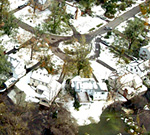
Regional Geographic Information Systems (GIS) Project
Regional response to a catastrophic event requires accurate geospatial data, properly referenced and containing attributes that correctly describe locations. Local agencies and people are often the most knowledgeable regarding what’s in their community, where it’s located, and how it may have changed. The Regional GIS Project will work with local data providers throughout the Region to catalog existing geospatial data. Working with RCPT project leads, the Regional GIS Project will develop a minimum essential data set tailored to the Region’s needs. Learn More >>

Regional Evacuation
Coordination Plan
The Region shares a vast transportation infrastructure of roadways, rail lines, and waterways that provides essential links across multiple jurisdictions. Regional planning will evaluate best practices for utilizing this transportation infrastructure in an evacuation and will provide a strategic framework to coordinate a regional evacuation. Through the development of the Regional Evacuation Coordination Plan, gaps and inconsistencies in current operations can be reviewed, the planning community may be expanded, and additional collaboration can be encouraged. Learn More >>
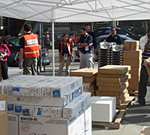
Regional Logistics Program
Effective coordination of personnel, material, and funding will be of paramount importance during any catastrophic incident within our Region. The Regional Logistics Program is an initiative designed to link resources, expertise, and information among participating jurisdictions in NY, NJ, CT, and PA.
By creating a shared system and strengthening regional partnerships, the Region optimizes its ability to manage resources and respond to a catastrophic event. The program focuses on four core components: planning, information-sharing, technology enhancement, and the establishment of highly trained emergency response logistics teams.
Learn More >>
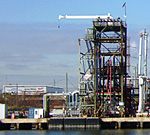
Regional Infrastructure Protection Plan (RIPP)
Focusing on the electrical sector, the all-hazards RIPP will explore how damage to the regional network affects other critical infrastructure sectors. Government can play a vital role in facilitating electricity recovery and network restoration in a catastrophic event. As the responsibility for the operation, maintenance, and reliability of the electricity networks lies with the owner/operators of independent utilities, however, RIPP will evaluate the best means of leveraging the close public-private collaboration that already exists in preparation for emergency events. Accordingly, the project has developed in close partnership with the North American Electric Reliability Corporation. Learn More >>

Regional Continuity of Operations (COOP) Plan
The Regional COOP Plan will provide a framework to assess the resilience of local agencies across the Region for catastrophic events. It will also provide guidance in expediting the resumption of essential services after a catastrophe. The project goal will be to explore an all-hazards, multi-agency response that is scalable from a single-site event within one jurisdiction to a large-scale regional emergency. Learn More >>

Regional Integration Center (RIC)
The RIC is the operational arm of the RCPT, managing and executing the planning goals for the NY/NJ area. The RIC is located near the World Trade Center in lower Manhattan and acts as a regional hub for the program. The core staff is composed of planners and project managers from multiple disciplines, with additional support and input coming from key emergency management personnel from around the Region. Learn More >>

Regional Disaster Housing Recovery Plan (RDHRP)
Housing recovery following a regional catastrophic disaster presents major operational challenges related to funding, materials, and labor. There are also organizational challenges related to integrating state and federal support into local relief efforts. The RDHRP is an all-hazards plan to provide guidance for best practices in the implementation of interim housing and the restoration of permanent housing. The RDHRP describes the continuation of housing recovery beyond the phases covered in the sheltering plan. Learn More >>
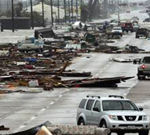
Regional Debris
Management Plan
Following a disaster, debris can present a number of problems, particularly on public rights of way, potentially hindering other critical response and recovery operations. In the event of a large regional or local disaster, resources from across the Region may be needed to assist in the post-event removal of debris from public and private properties. The Regional Debris Management Plan will describe the strategic and decision-making processes needed to address all-hazards debris management planning needs. Learn More >>

Regional Volunteer
Preparedness Plan
The Regional Volunteer Preparedness Plan is designed to build and strengthen regional partnerships among volunteer managers, nonprofits, disaster response agencies, and the private sector to improve the response capability of the region’s affiliated volunteer networks and to work together following a catastrophic event.
Learn More >>
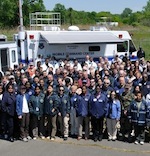
Regional Mass Fatality Management (MFM) Plan
The Regional MFM Plan will integrate a variety of forensic disciplines and outline operational strategies to incorporate best practices for developing a framework to manage mass fatalities following a regional catastrophic event. Learn More >>
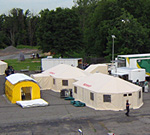
Regional Radiological Dispersal Device (RDD) Plan
The RDD Plan will provide guidance in planning for radiologic events by examining strategies for site containment, mass decontamination, environmental monitoring, and the recovery/restoration of contaminated areas. Learn More >>
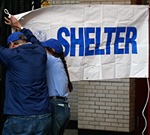
Regional Sheltering Plan
The Regional Sheltering Plan will provide all-hazards guidance for jurisdictions to develop protocols regarding emergency sheltering for people — including families with children, single adults, the elderly, special needs populations, and pet owners — during a catastrophic event. Learn More >>

Regional Private Sector
Integration Plan
The Private Sector Integration Plan will shed light on requirements and challenges the private sector faces in order to better manage resources and ensure greater resilience after an incident. Learn More >>
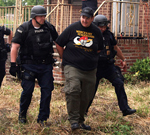
Regional Nuclear Response Plan
The Nuclear Response Plan provides an emergency management framework for responding to a nuclear attack. It focuses on the tools that are best used to handle chaos: coordination, communication and effective management.Learn More >>
|














